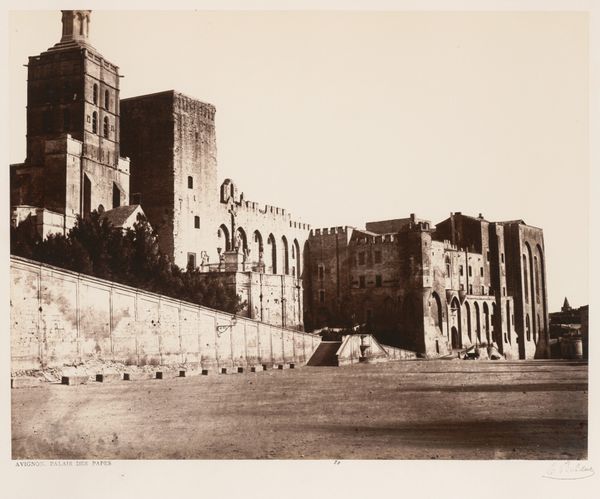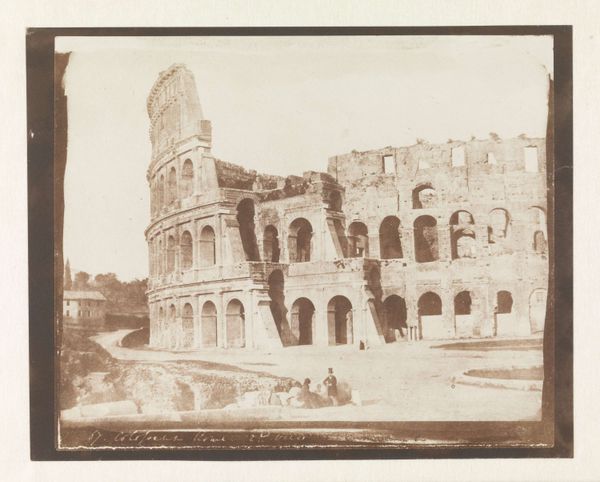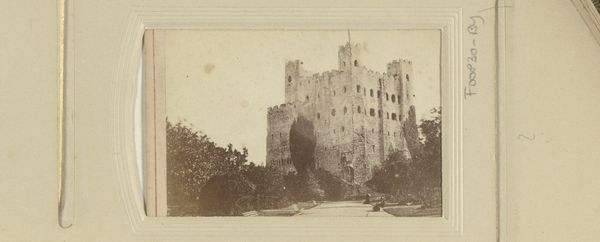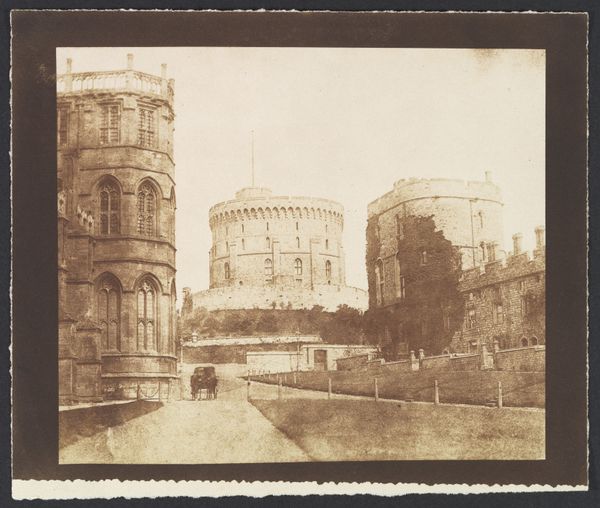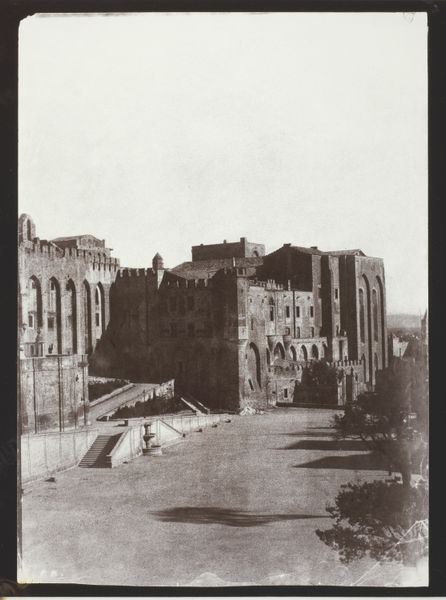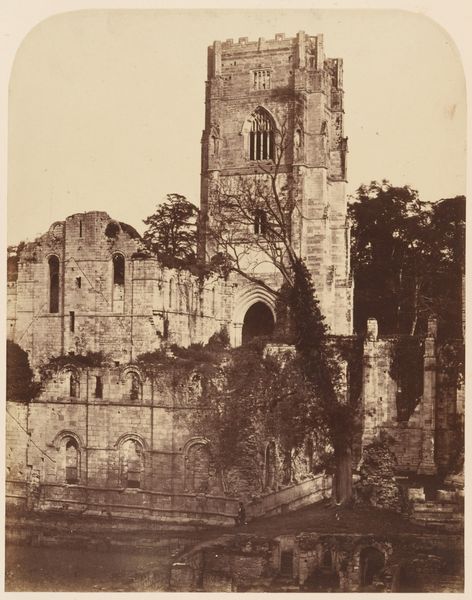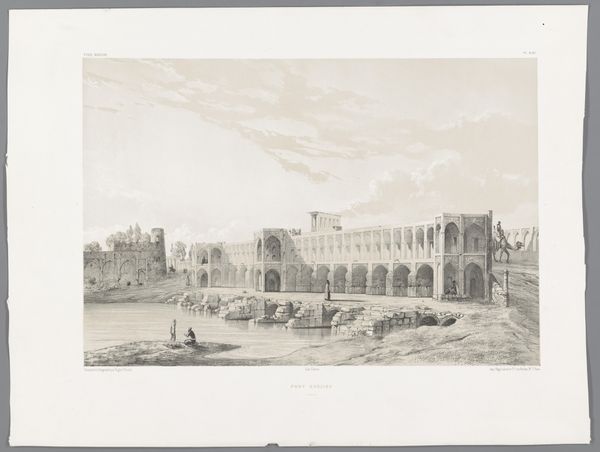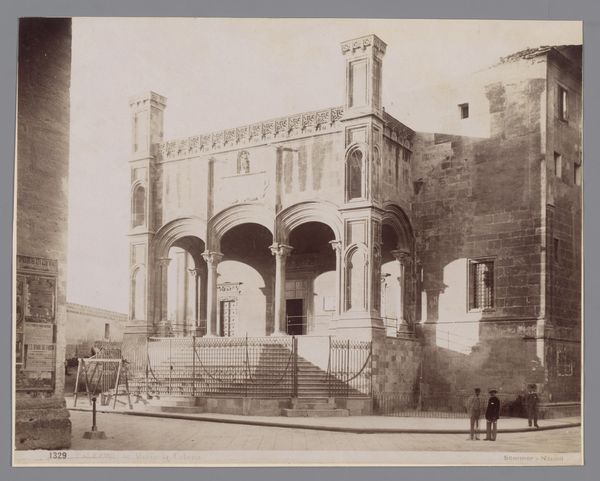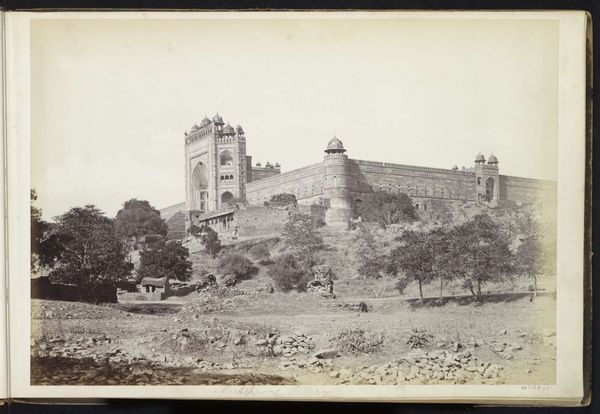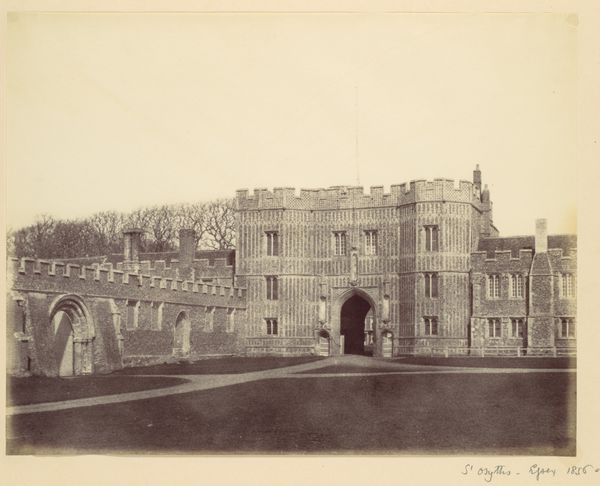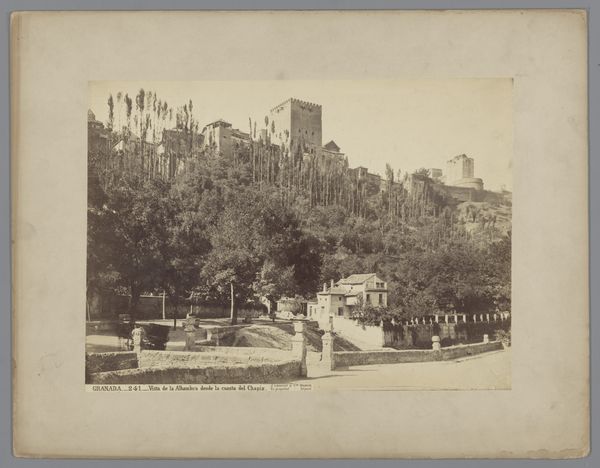
Dimensions: height 170 mm, width 240 mm
Copyright: Rijks Museum: Open Domain
Curator: Looking at this photographic print titled "Exterieur van het Pauselijk Paleis in Avignon" by Franceline Chabrier de Lafongt, which dates to around 1860-1880, I'm struck by its monumental presence. Editor: Immediately, it's the vast emptiness that grabs me. All that pale stone under a slightly eerie sky. It almost feels like a stage set waiting for a drama. Curator: I think the desaturated tone really emphasizes the weight and permanence of the Palace, hinting at the many histories contained within its walls. It's clearly an imposing structure in this rendition, even beyond its physical dimensions. Editor: Definitely imposing, a kind of papal stronghold. But also, I see how Lafongt uses the lone tree in the upper right corner. It seems so skeletal, and yet softens the stern formality of the palace architecture. The smallness of the people further amplifies the power of the building but simultaneously acknowledges the impact it has on those living and working around it. Curator: I agree. And it seems like a careful choice to present this image using a daguerreotype, lending it the patina of antiquity, doesn't it? Highlighting that sense of the slow turning wheels of power, influence, and architectural achievement. Editor: Absolutely. It raises questions about institutional authority. Where do we locate the sources of this power and, more crucially, what does that mean to our understandings of justice, of society, and more precisely in this rendering, architecture? Curator: Considering that the subject is indeed the Palais des Papes, which was briefly the center of the Catholic Church...the power radiating out of this particular space affected so many people in Europe. Lafongt's image presents that power as almost...ineffable. Timeless, solid, but captured so delicately. Editor: Precisely, this timeless quality is exactly the image this institution would wish to project. But timeless is not ahistorical and unchanging. Curator: True, timeless doesn't mean without history. This picture manages to hold both the solid weight and an intriguing air of transient time, somehow. Editor: Perhaps even implying a suggestion that authority is always contingent and, thus, vulnerable. Curator: Well, there's something about how these older photos just conjure up entire atmospheres... Editor: And this photograph of the Palace does not hesitate to place those dialogues concerning structures of power directly within our view. It’s something we have to wrestle with to even approach something like justice, isn't it?
Comments
No comments
Be the first to comment and join the conversation on the ultimate creative platform.
